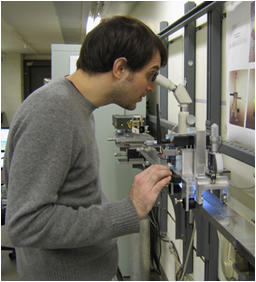Metal Tapes

The Dimensional Metrology Group (683.01) performs calibrations of metal measuring tapes. The Dimensional Metrology Group calibrates the master tapes used throughout the high quality tape manufacturing industry. Other applications include land surveying, petroleum gauging, crime scene investigation, and state bureaus of Weights and Measures.
The NIST facility can accommodate tapes as long as three kilometers. Tapes are calibrated by comparing the customer specified length intervals to a frequency-stabilized laser with active temperature, pressure and humidity corrections applied to the laser wavelength in air. Each metal tape calibration includes a NIST calibration report that provides the calibrated value and uncertainty for each specified interval.
Most metal tapes are calibrated with a specified tension applied along their length because the length of tapes varies with tension. NIST has default tensions for specified lengths of tapes; however, customers may specify special tensions that may be required to meet the needs of their internal quality system or governing industry standards. Each calibration report also includes the calculated product of the tape cross-sectional area and Young's modulus, or AE value. The value of this parameter can be used to estimate the tape length for tensions different from that used in the calibration.
Uncertainties
The uncertainty in the calibrated values depends on many factors. Two significant factors are the material used to construct the tape and the quality of the graduation marks. For steel tapes with high quality graduation marks, the expanded uncertainty U with k = 2 is U (k = 2) = (27 + 0.88L) µm where L is the length of the interval in meters.
Contacts
-
(301) 975-3468

